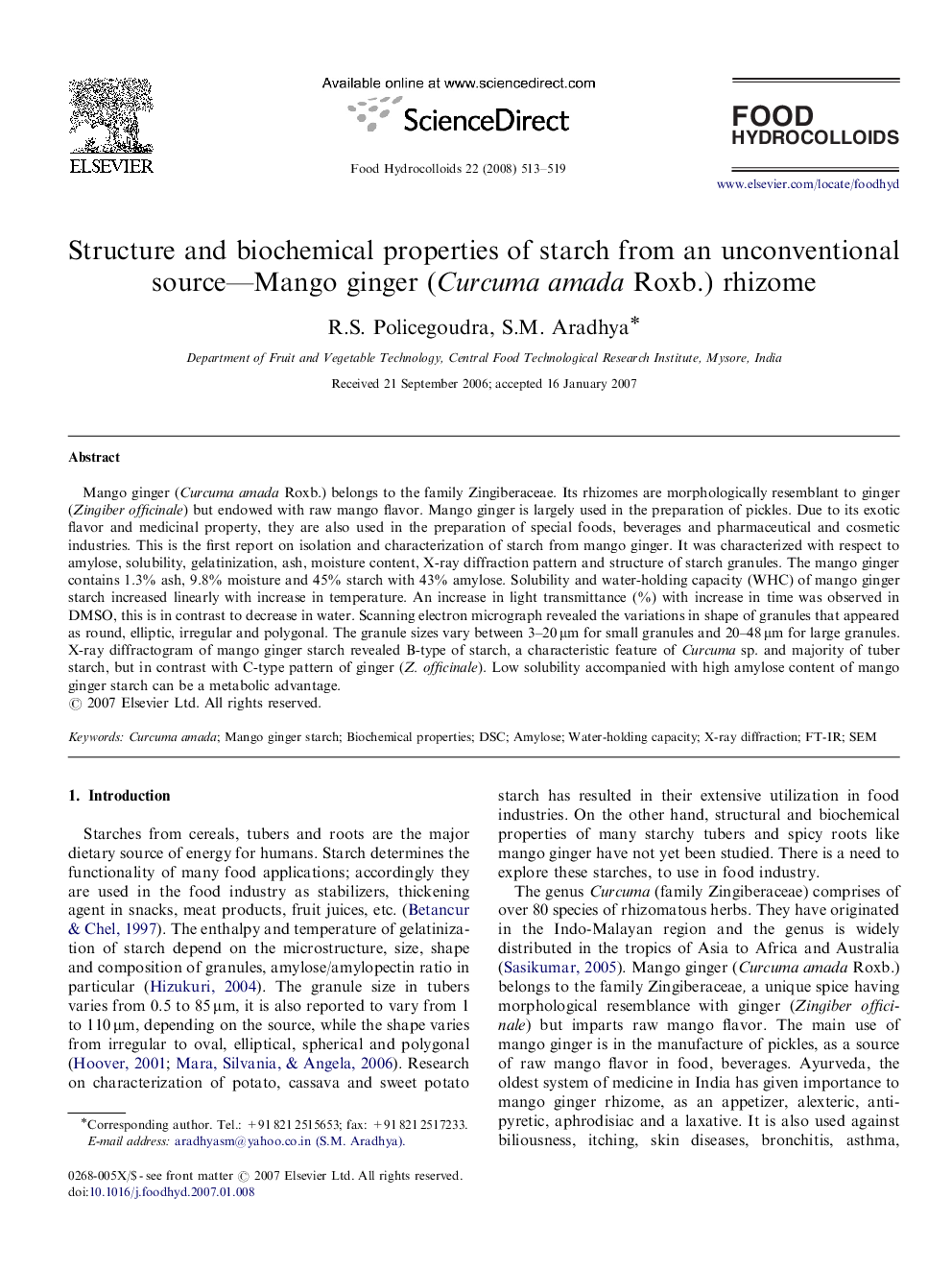| کد مقاله | کد نشریه | سال انتشار | مقاله انگلیسی | نسخه تمام متن |
|---|---|---|---|---|
| 605413 | 880345 | 2008 | 7 صفحه PDF | دانلود رایگان |

Mango ginger (Curcuma amada Roxb.) belongs to the family Zingiberaceae. Its rhizomes are morphologically resemblant to ginger (Zingiber officinale) but endowed with raw mango flavor. Mango ginger is largely used in the preparation of pickles. Due to its exotic flavor and medicinal property, they are also used in the preparation of special foods, beverages and pharmaceutical and cosmetic industries. This is the first report on isolation and characterization of starch from mango ginger. It was characterized with respect to amylose, solubility, gelatinization, ash, moisture content, X-ray diffraction pattern and structure of starch granules. The mango ginger contains 1.3% ash, 9.8% moisture and 45% starch with 43% amylose. Solubility and water-holding capacity (WHC) of mango ginger starch increased linearly with increase in temperature. An increase in light transmittance (%) with increase in time was observed in DMSO, this is in contrast to decrease in water. Scanning electron micrograph revealed the variations in shape of granules that appeared as round, elliptic, irregular and polygonal. The granule sizes vary between 3–20 μm for small granules and 20–48 μm for large granules. X-ray diffractogram of mango ginger starch revealed B-type of starch, a characteristic feature of Curcuma sp. and majority of tuber starch, but in contrast with C-type pattern of ginger (Z. officinale). Low solubility accompanied with high amylose content of mango ginger starch can be a metabolic advantage.
Journal: Food Hydrocolloids - Volume 22, Issue 4, June 2008, Pages 513–519